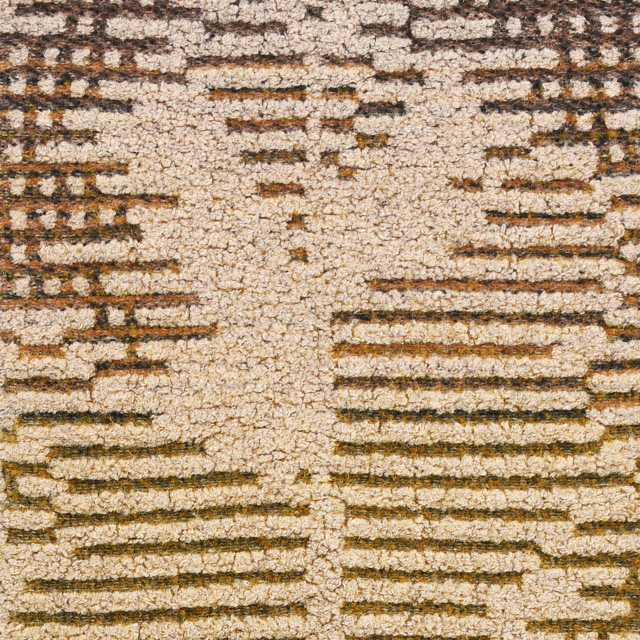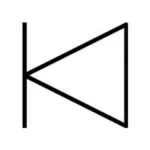PROVENANCE ‘is the place of origin or earliest known history of something'((Oxford Dictionaries (2014) Provenance [Online] Available from: http://www.oxforddictionaries.com/definition/english/provenance [Accessed 3 Dec 2014].)). Today we know very little about the majority of things we buy. The fashion and textiles industry is overflowing with products, but there is little information available to consumers about the sourcing and production of these goods. Consumer sovereignty is the idea that consumers drive the production of goods by exercising their choice through their purchasing decisions. ‘Economic theory (and common sense) holds that consumers will demand and purchase only those products that they find to be acceptable'((Paulins, V. and Hillery, J. (2009) Ethics in the fashion industry. New York: Fairchild Books: 110.)). However, with limited product information and influential marketing, it is hard for consumers to make informed decisions that align with their personal ethics and beliefs. In the last few years customers have started ‘scrutinising textiles more rigorously than ever'((Collins, J. (2013) Textiles report: material world [Online] Available from: http://www.drapersonline.com/in-business/textiles-report-material-world/5045691.article#.VH9d2GSsVq4 [Accessed 3 Dec 2014].)), resulting in ‘a renewed emphasis on quality and provenance'((Collins, J. (2013) Textiles report: material world [Online] Available from: http://www.drapersonline.com/in-business/textiles-report-material-world/5045691.article#.VH9d2GSsVq4 [Accessed 3 Dec 2014].)). This trend means ‘we don’t have to look too far to see a growth in interest in provenance'((Smith, K. (2013) Where did it come from? Fashion and Provenance [Online] Available from: http://editd.com/blog/2013/01/fashion-provenance/ [Accessed 3 Dec 2014].)).
TRANSPARENCY within a business context is ‘the quality of making something accessible'((Monty, S. (2014) Why transparency and authenticity wins in business and marketing [Online] Available from: http://www.theguardian.com/technology/2014/feb/17/why-transparency-and-authenticity-wins-in-business-and-in-marketing [Accessed 3 Dec 2014].)) to consumers. It can be used to build trust, but only if paired with AUTHENTICITY. When addressing sustainability issues, an honest and genuine approach to sharing information can help to educate and attract customers. As Joseph Pine says in his TED talk about what consumers want, ‘Authenticity is becoming the new consumer sensibility…what will make us happy is spending our time and our money satisfying the desire for authenticity'((Pine, J. (2004) Joseph Pine: What consumers want [online video] Available from: http://www.ted.com/talks/joseph_pine_on_what_consumers_want#t-822935 [Accessed 3 Dec 2014].)).
Patagonia((Patagonia (2014) Patagonia [Online] Available from: http://www.patagonia.com [Accessed 3 Dec 2014].)) is an outdoor clothing brand that shares stories about their supply chain and deals with sustainability in a transparent and authentic way((Patagonia (2014) The footprint chronicles [Online] Available from: http://www.patagonia.com/us/footprint/ [Accessed 3 Dec 2014].)). Rather than claiming to be perfect, they are open about the challenges they face:
‘We can’t pose Patagonia as the model of a responsible company. We don’t do everything a responsible company can do, nor does anyone else we know. But we can tell you how we came to realize our environmental and social responsibilities, and then began to act on them…We have a long way to go and we don’t have a map – but we do have a way to read the terrain and to take the next step, and then the next'((Patagonia (2014) Environmental and social responsibility [Online] Available from: http://www.patagonia.com/eu/enGB/patagonia.go?assetid=9182 [Accessed 3 Dec 2014].)).
Honest by((Honest by (2014) Honest by [Online] Available from: http://www.honestby.com/ [Accessed 3 Dec 2014].)) is a fashion brand that operates honestly with a 100% transparency policy. Launched in 2012 by Bruno Pieters (formerly of Hugo Boss), the company claims to be ‘the first company in the world to share the full cost breakdown of its products'((Honest by (2014) Honest by: about [Online] Available from: http://www.honestby.com/en/page/16/about.html [Accessed 3 Dec 2014].)). Each item on their website lists; material information, manufacturing details and price calculation. It is incredibly detailed, including information such as design time and number of fittings, to manufacturers address and even including store mark up calculations. By sharing this they give the customer an insight into the development, production and costing process, allowing them ‘the opportunity to shop with complete awareness of what they are buying'((Honest by (2014) Honest by: about [Online] Available from: http://www.honestby.com/en/page/16/about.html [Accessed 3 Dec 2014].)). ‘Honest by wants to shed light on the questions: where is it made and by whom. Bruno Pieters believes that fashion is a celebration of beauty and that the story behind that celebration can be equally beautiful'((Honest by (2014) Honest by: about [Online] Available from: http://www.honestby.com/en/page/16/about.html [Accessed 3 Dec 2014].)).
BaaCode((BaaCode (2014) BaaCode [Online] Available from: http://baacode.icebreaker.com/ [Accessed 3 Dec 2014].)) is a clothing company that has commitment to animal welfare, the people they work with and the environment. Each garment has a unique “baacode”, allowing the customer to trace the origin of the wool used to make that piece. On their website you can enter the “baacode” which directs you to information about where the wool source came from, including videos and photos telling the story of the farmers and their sheep.
Provenance((Provenance (2014) Provenance [Online] Available from: https://www.provenance.org [Accessed 3 Dec 2014].)) is a social enterprise passionate about sharing the stories about the things we buy and/or make. It ‘is a network for open and accessible information about products and supply chains.'((Provenance (2014) Provenance: join [Online] Available from: https://www.provenance.org/join [Accessed 3 dec 2014].)). Jessi Baker, the co-founder, recognised a trend towards how we perceive value and a desire for production transparency. Whilst visiting factories she had a ‘stark realisation that there are people behind the things that we buy'((Sedghi, A. (2014) The Guardian: Jessi Baker [Online] Available from: http://www.theguardian.com/fashion/fashion-blog/2014/apr/25/jessi-baker-clothes-slaves-fashion-provenance-website-revolution-consumer [Accessed 3 Dec 2014].)).
‘Every product has a story.
A journey of people, places and raw materials.’((Provenance (2014) Provenance: about [Online] Available from: https://www.provenance.org/about [Accessed 3 Dec 2014].))
Providing a NARRATIVE about a products creation can act as a unique selling point, as ‘how a product is made becomes part of its value structure and its worth'((Graj, S. (2013) After Bangladesh: Is the apparel provenance the next brand DNA battleground? [Online] Available from: http://www.forbes.com/sites/simongraj/2013/05/30/after-bangladesh-is-apparel-provenance-the-next-brand-dna-battleground/ [Accessed 3 Dec 2014].)). Provenance ‘slows down the pace and adds a story to the products that we consume'((Smith, K. (2013) Where did it come from? Fashion and Provenance [Online] Available from: http://editd.com/blog/2013/01/fashion-provenance/ [Accessed 3 Dec 2014].)), connecting the user to the source and promoting sustainable consumption.










